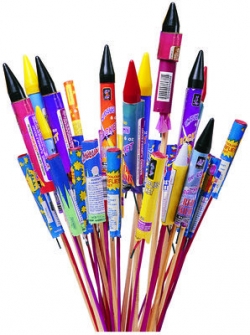You are made of energy from sunlight. That may sound like a crazy idea, but it's true! Not only does the sun help you see, get warm, and get tan, it's also the glue that holds together your building blocks. It's the stuff that helps you move! Don't believe me? Wonderful. Let's prove it with science!
What makes you move? The muscles in your legs and your arms, of course. What makes them move? Food, of course. Think of your foot kicking a ball. You eat some food, which gives you enough energy to move your leg, which then hits the ball. Food--you--leg--ball.
Energy is the ability to cause change. You need a little energy to walk, a lot to run, and a lot more to lift heavy things. Energy can change from one kind to another, like the way it changes from the kind inside the food you eat to the kind that lets you kick a ball. These different kinds of energy are always changing. However, even though energy is always changing, it always comes from somewhere and cannot be made from nothing. This means people have to get their energy from other things, like food. So here's the real question: where does your food get its energy?

Just a little bit harder and this ball's going to the moon.
The sun is the battery that makes life on Earth run. One way or another, most living things use it to make their energy. In fact, they have used the sun since life began.
Sunlight is a kind of energy in the form of light that is able to travel across space to Earth. Does this mean you can just stand in the sun to get what you need to live? Sadly, no. You can feel the heat and see the light, but you cannot make your own food from it. You can, however, eat things that make their own energy from sunlight. For example, plants use sunlight to make their own food. So why are they so lucky?

I thought corn came fro the grocery store?
MarkBuckawicki, CC0, via Wikimedia Commons
Let's set a log on fire. Don't worry, we'll be safe. White and yellow flames start leaping off the top of the log. Have you ever noticed that a fire looks a lot like the sun's light? Give yourself a pat on the back, scientist. That is exactly what's happening! When something burns, it changes back into the same kind of energy as the sun lets out.
Chemical energy is energy that's kept in the building blocks that make up things. When you light a log in the fireplace, those building blocks start to break apart and they turn into heat and light. Every time you look at a log you know that energy is hidden in there somewhere. The same energy is in the food you eat.

This will warm things up in here.
Yinan Chen, Public Domain, via Wikimedia Commons
You keep toys in a box. You keep food in a cooler. You might have already thought this, but you can't see a lot of the energy in the world. The tree right outside, the desk you're sitting in, and the food in your backpack all have hidden energy inside of them.
Stored energy is energy that is kept inside of something. When you eat a plant, you take in the energy it made with the sunlight. That does not mean you need to use it right away. You can store it, like a battery does when it is charged. Your body is smart enough to know you can't eat all the time. Instead we eat a lot and then use the energy over time when and where we need it. Just think what life would be like if the moment you ate a plant, you had to spend all that energy right then! Eating food would be like lighting a firework, making you run and scream across the room during every meal.

Looks like there's going to be some fireworks around here tonight.
You are made of sunlight. There. Does that sentence seem so crazy now? Whether you soak it through your skin, eat it in a plant, grow new muscles with it, or run it off, it's a part of you. You can run, jump, scream it off. You can even sit quietly, saving it all it for later.
References:
eschooltoday.
"Chemical Energy" E School Today, 2010.
<http://www.eschooltoday.com/energy/kinds-of-energy/what-is-chemical-energy.html>
PBS
LearningMedia. "Where Do You Get Your Energy?" PBS Learning
Media, 2014.
<http://www.pbslearningmedia.org/resource/lsps07.sci.life.stru.cellenergy/where-do-you-get-your-energy/>